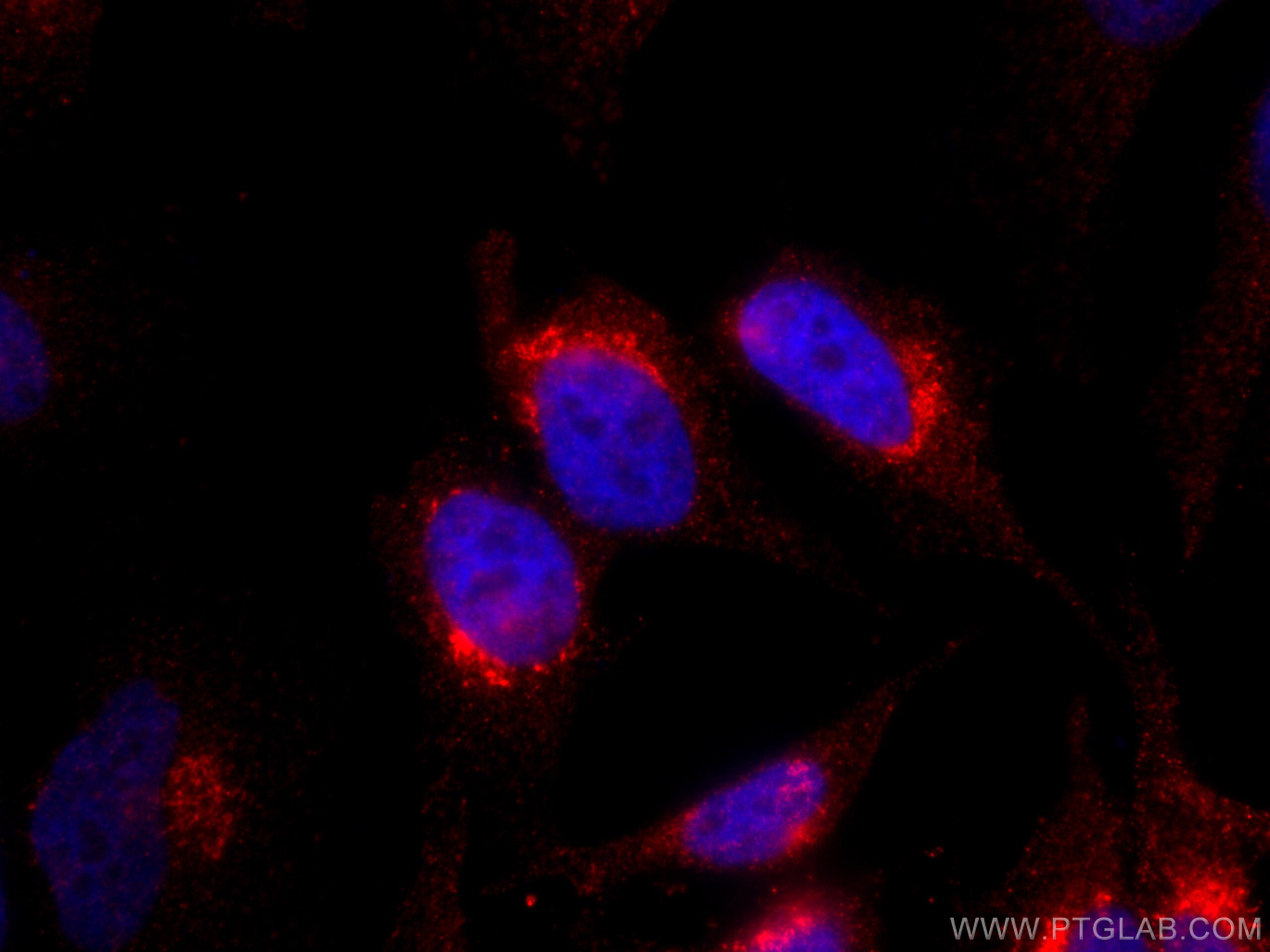Anticorps Monoclonal anti-Syntaxin 10
Syntaxin 10 Monoclonal Antibody for IF/ICC
Hôte / Isotype
Mouse / IgG1
Réactivité testée
Humain
Applications
IF/ICC
Conjugaison
CoraLite®594 Fluorescent Dye
CloneNo.
1B1C3
N° de cat : CL594-66821
Synonymes
Galerie de données de validation
Applications testées
| Résultats positifs en IF/ICC | cellules HeLa, |
Dilution recommandée
| Application | Dilution |
|---|---|
| Immunofluorescence (IF)/ICC | IF/ICC : 1:50-1:500 |
| It is recommended that this reagent should be titrated in each testing system to obtain optimal results. | |
| Sample-dependent, check data in validation data gallery | |
Informations sur le produit
CL594-66821 cible Syntaxin 10 dans les applications de IF/ICC et montre une réactivité avec des échantillons Humain
| Réactivité | Humain |
| Hôte / Isotype | Mouse / IgG1 |
| Clonalité | Monoclonal |
| Type | Anticorps |
| Immunogène | Syntaxin 10 Protéine recombinante Ag27861 |
| Nom complet | syntaxin 10 |
| Masse moléculaire calculée | 28 kDa |
| Poids moléculaire observé | 28 kDa |
| Numéro d’acquisition GenBank | BC017237 |
| Symbole du gène | Syntaxin 10 |
| Identification du gène (NCBI) | 8677 |
| Conjugaison | CoraLite®594 Fluorescent Dye |
| Excitation/Emission maxima wavelengths | 588 nm / 604 nm |
| Forme | Liquide |
| Méthode de purification | Purification par protéine G |
| Tampon de stockage | PBS with 50% glycerol, 0.05% Proclin300, 0.5% BSA |
| Conditions de stockage | Stocker à -20 °C. Éviter toute exposition à la lumière. Stable pendant un an après l'expédition. L'aliquotage n'est pas nécessaire pour le stockage à -20oC Les 20ul contiennent 0,1% de BSA. |
Informations générales
Syntaxin 10 (STX10), also named as SYN10, belongs to the syntaxin family. Syntaxins are target membrane SNAREs(Soluble NSF attachment protein receptors) which are membrane components that determine the specificity of the docking and fusion of vesicles to target membranes.
Protocole
| Product Specific Protocols | |
|---|---|
| IF protocol for CL594 Syntaxin 10 antibody CL594-66821 | Download protocol |
| Standard Protocols | |
|---|---|
| Click here to view our Standard Protocols |


